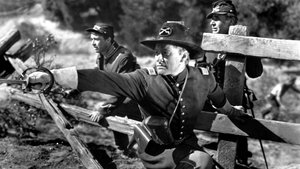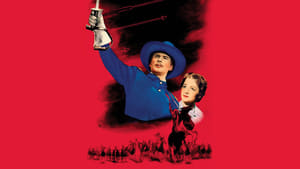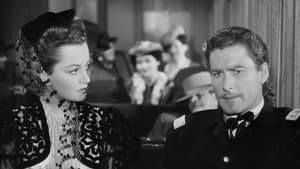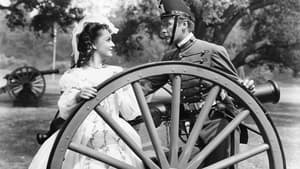Video Sources 0 Views
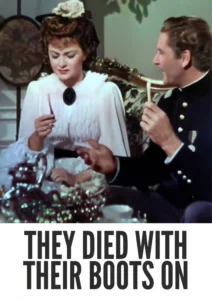
Synopsis
Gallantry and Glory: They Died with Their Boots On (1941) in Vivid Color

Embark on a thrilling journey through the American West with They Died with Their Boots On, a sweeping Western adventure from 1941, now brilliantly colorized for a visually stunning experience. This film chronicles the life of General George Armstrong Custer, blending historical events with Hollywood spectacle. Perfect for fans of classic Westerns and those seeking a grand, romanticized portrayal of American history, this HD download brings a timeless epic to life. Also known under the title Custer of the West.
They Died with Their Boots On Storyline: The Legend of General Custer
They Died with Their Boots On tells the story of George Armstrong Custer (Errol Flynn), from his days at West Point to his legendary last stand at the Battle of Little Bighorn. The film portrays Custer as a charismatic and courageous leader, albeit one prone to recklessness and disobedience.Custer’s military career is marked by both triumphs and controversies. He wins battles, clashes with superiors, and finds love with Elizabeth Bacon (Olivia de Havilland). The narrative builds towards the fateful encounter at Little Bighorn, where Custer and his men are tragically outnumbered and overwhelmed by Native American forces. The film presents a romanticized, albeit historically questionable, version of Custer’s life and death, emphasizing his bravery and sense of duty. They Died with Their Boots On captures the spirit of the Wild West and the complex legacy of one of its most iconic figures.
Movie Cast
The film features a stellar cast that brings this historical drama to life:
- Errol Flynn as George Armstrong Custer
- Olivia de Havilland as Elizabeth Bacon Custer
- Arthur Kennedy as Ned Sharp
- Gene Lockhart as Samuel Bacon
- Anthony Quinn as Crazy Horse
Movie Genre
They Died with Their Boots On falls into the genre of Western adventure epic, combining elements of historical drama, romance, and action. Its grand scale, sweeping landscapes, and heroic narrative make it a classic example of Hollywood’s romanticized vision of the American West.
Historical Context: Hollywood and the Western Myth
Released in 1941, They Died with Their Boots On reflects Hollywood’s fascination with the American West and its legends. The film was produced during a time when Westerns were immensely popular, offering audiences an escape into a world of adventure, heroism, and frontier justice. While the film takes liberties with historical accuracy, it captures the spirit of the era and the enduring appeal of the Western myth.
Colorization Details
This colorized version of They Died with Their Boots On has been meticulously restored using modern digital techniques, enhancing the visual appeal while preserving the film’s original grandeur. The colorization process involved carefully analyzing the grayscale tones of the original black and white footage and assigning appropriate colors to each scene. While the specific software used remains proprietary, the techniques employed included advanced algorithms for color palette selection and image enhancement. This painstaking process brings new life to the landscapes, costumes, and characters, making the story even more engaging for modern audiences. While debates about colorizing classic films continue, it introduces these films to a broader audience, ensuring their legacy for future generations.
Technical Details
- Director: Raoul Walsh
- Screenplay: Wally Kline, Aeneas MacKenzie
- Story: Aeneas MacKenzie
- Cinematography: Bert Glennon
- Edited by: William Holmes
- Production Company: Warner Bros.
- Distributed by: Warner Bros.
- Runtime: 138 minutes
Technical Specifications
- Download Format: MP4
- Resolution: HD (1080p)
- Compatibility: Compatible with most devices, including smartphones, tablets, computers, and smart TVs.
Reviews and Critical Reception
They Died with Their Boots On (1941) is celebrated for its epic scope, thrilling action sequences, and the charismatic performances of Errol Flynn and Olivia de Havilland. While criticized for its historical inaccuracies, the film remains a beloved classic of the Western genre, showcasing Hollywood’s ability to create larger-than-life heroes and unforgettable stories. As a sweeping and romanticized portrayal of General Custer’s life, They Died with Their Boots On continues to captivate audiences with its grand scale and enduring appeal.
FAQs
- Q: What is They Died with Their Boots On about?
- A: They Died with Their Boots On is a Western adventure epic about the life and death of General George Armstrong Custer.
- Q: Is They Died with Their Boots On (1941) historically accurate?
- A: While inspired by historical events, the film takes liberties with the facts and presents a romanticized version of Custer’s life.
- Q: Is this version of They Died with Their Boots On colorized?
- A: Yes, this version has been professionally colorized to enhance the viewing experience.
- Q: What makes They Died with Their Boots On a classic Western?
- A: They Died with Their Boots On is a classic Western due to its grand scale, thrilling action, and the iconic performances of Errol Flynn and Olivia de Havilland.
- Q: What is the download format?
- A: The download format is MP4, which is compatible with most devices.
- Q: What resolution is the download?
- A: The resolution is HD (1080p), providing a high-quality viewing experience.
Download Now in HD!
Watch They Died with Their Boots On Today!

